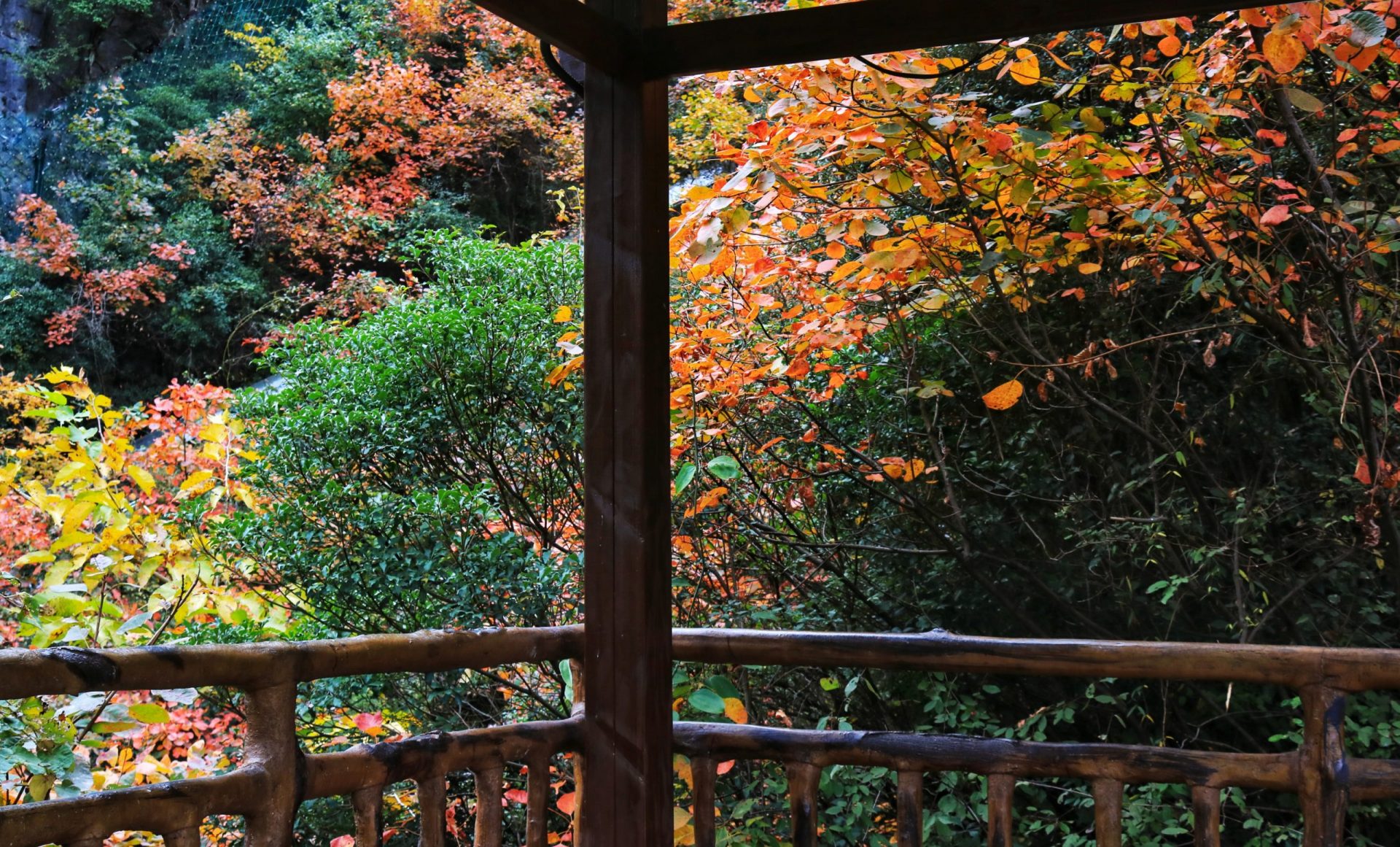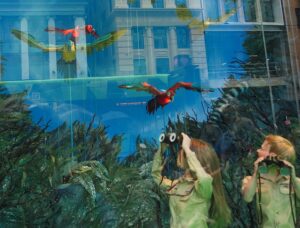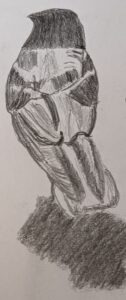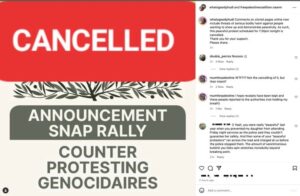I used to answer questions on Livejournal. Most of the time, people wanted to know about matters historical, especially concerning the Middle Ages. When I moved to a blog on my own website, that interaction lessened somewhat and I stopped asking if anyone had questions they wanted me to answer.
I discovered this summer (for yes, it’s still summer in Australia) that I missed that interaction with readers. I asked on Facebook if anyone had any questions they’d like me to answer here. The people of Facebook answered. There were several simple questions (or questions with simple answers) and I’ll reply to them today, but there were two questions that demand more complex answers, so they’ll be posts of their own.
Before I answer those two questions, I would be delighted if anyone reading this have questions of your own. Ask them in the comments.
I’m happy to take questions about Australia and our history, my family history, Australian Jews, Judaism in general, the Middle Ages in Western Europe, medieval magic, food history, my favourite anime, Doctor Who, my writing, my current projects, dealing with many illnesses at once, any of the subjects linked to any of my doctorates, and… to be honest… anything else I have an interest in except certain current issues.
I don’t answer questions about Israel partly because there are others who know a lot more but mostly because I don’t like bullies and there are a lot of people demanding right now “Deny any links to Israel in your family and your Jewish heritage and religion and then we might speak to you.” This is bullying. Also, the fact that I spell out the demand in this particular way says a bunch about my views, so now you don’t need to ask those questions!
Also, I am not going to answer questions at this time (maybe other places and times) about family physically hurt and even killed due to antisemitism and related hate. I don’t have the spoons. I do have such family and the pain I feel for them never stops. And no, this does not mean I don’t care about anyone outside my family. I’m capable of caring for family and for a whole bunch of other people also, oddly. I don’t want to answer questions about them because most of the people who ask such questions have particular platforms and… I do not want the questions to play with emotions and safety. Besides, aren’t my regular subjects sufficiently interesting?
Today I’ll be answering two questions, and they’re quite different from each other. Even if the readers are also friends, I won’t use their names. Privacy matters. If you want to identify yourself, feel free to in the comments.
A reader said, “Oh, I do have a question! It just occurred to me when I was looking at pictures of beautiful menorahs on Bluesky last week. If someone can’t physically light their menorah because of illness or disability, can they use one with battery operated candles. And more generally, how do the rules around not working or using modern technology on the Sabbath work for disabled Jews who want to observe that but need technology to be independent, and don’t have outside support?”
The answer is both simple and complex. Judaism is not a one-size-fits-all religion. We’re taught a bunch of questions we can ask ourselves and make our own decisions about such things, and we can also ask rabbis. Health and well-being matter to us, so if we need a mechanical help then we are not encouraged to forgo it during Shabbat. The decision comes down to the person whose body it is, or, in the case of lighting candles for Chanukah, whose chanukiya it is.
I was taught from my childhood that we’re responsible for our own decisions and that it’s always better if those decisions are informed. For any Jew brought up as I was, there are choices on how to become informed. Some people rely heavily on the views of rabbis. Some read up a lot. Some simply make up their mind what to do and when.
Most of the time, for something like lighting candles, pragmatism rules, I suspect. I can’t speak on behalf of others and tell you what choices they make. Because our understanding of the world and of Judaism matters, decisions on these matters can be hugely varied. Some Jews are so enormously religious that every choice in life requires immense thought and respect paid to both the letter of the law and the spirit of the law. Some are casual about the religious side and may not light the candles at all, because they have other things to do with limited capacity. Most of us are somewhere in between.
Even for those of us who fall into the in-between land, the can be huge differences. One of the wonderful things about Judaism is these differences. When I talk to other Jews I find out their traditions and we chat about the reasons behind this choice or that. Learning is part of the Jewish soul and so learning about choices, whether they be choices for how to remain a good human being or choices about the lighting of candlesticks will always throw up interesting insights.
Let me leave you with one of my favourite candle-lighting insights from my childhood. There is a perpetual light inside synagogues. This light reminds us of the holy light that was always kept lit in the Temple. That original light is the reason for the miracle needed on the original days of Chanukah, when that light had to be kept going even when there was no clean oil to keep it going with because so much had been defiled by the worship of a different religion entirely within our holiest of holies. Lo, the oil lasted eights days. Celebrating that light from the Temple before its destruction led eventually to the candles we light for Chanukah. The original light was in an oil lamp, and for a very long time oil and wicks gave us our Chanukah lights. Now, most of us use candles for Chanukah (as you know) and electricity for the memory of the Ner Tamid.
The other question I’ll answer this week is quite, quite different. “So, I know you have some extremely talented, but – it’s fair to say – vastly different, musicians in your family history. What is your favourite musical memory from one of your family members?”
Normally I’d give a story about my father’s first cousin, Linda Phillips. Not only was she the per-eminent musician in the family, but she had great stories. Or I’d tell you about my own first cousin, Jon Snyder, who played in Captain Matchbox. My most favourite of all the music stories in my family is all about my father.
My father was a dentist. He claimed he loved going to orchestral concerts because the music gave him a good nap. He was also tone deaf. The first and third sentences are the critical ones in this story.
My sisters and I helped out at the dental practice when we were old enough. We were called “Assistant Dental Nurses.” I was the one responsible for patients who found going to the dentist difficult. I was that person long before I was old enough to be an Assistant Dental Nurse. I was expected to go into the waiting room and chat with people. I was, when I did this, the first stage of my father’s very distinctive version of an anesthetic system. Also, when a patient hurt too much and panicked in the dental chair, I was sent to the waiting room to explain what was happening. A few lucky indivuals react, for instance, to nitrous oxide by making noises that sound as if aliens were burrowing into their skull. Dad always took these patients out from under the nitrous oxide and checked to see if they were fine.
With one patient in particular, she was perfectly fine, both times he checked. She had been telling Dad how fine she was, the first time, and the second, she was singing. She simply had no vocal chord control and she wasn’t listening to what she sounded like and… everyone in the waiting room was freaked out.
I was a teenager and very literal. I still am very literal. My explanation of what was happening, including the warning that this filling might take a little longer than we expected, didn’t just calm people down, they chuckled.
When each of those patients reached the dental chair, they were perfectly relaxed. Then Dad gave his list of choices for anesthesia.
1. No anesthetic at all. Quite a few people opted for this. I did, myself, when I could. These days I am weak as a kitten and need help.
2. Nitrous oxide, or laughing gas. It relaxes me, and no undue and unexpected screaming has ever resulted from me taking it. It’s what I accepted on bad days or if the filling was deep and my teeth sensitive.
3. An injection.
4. A series of jokes by Dad. No-one ever chose this option, because everyone knew my father’s sense of humour. His favourite photocopy jokes were all on display in the waiting room.
5. A rap over the head with a hammer. No-one ever chose this, either.
6. Dad singing them to sleep. Some people chose this. When they realised that Dad sang in many keys, but only used two notes, they stopped him and said “How about we try an injection?”
To be honest, Dad’s list changed according to his mood. Once it reached 9 items, but I can’t remember them.
I do remember the time he decided to sing “Maxwell’s Silver Hammer” and the patient asked him if he had an invisible hand, holding the hammer, because he hurt so much from the singing that death might be preferable. From then, when I was Assistant Dental Nurse, I warned people in the waiting room about the list and said, “No matter what you do, don’t let Dad sing.”


 I took up drawing this year. I’m still very much a beginner, but I am getting much better at really looking at something and seeing it at the level necessary to draw it.
I took up drawing this year. I’m still very much a beginner, but I am getting much better at really looking at something and seeing it at the level necessary to draw it.